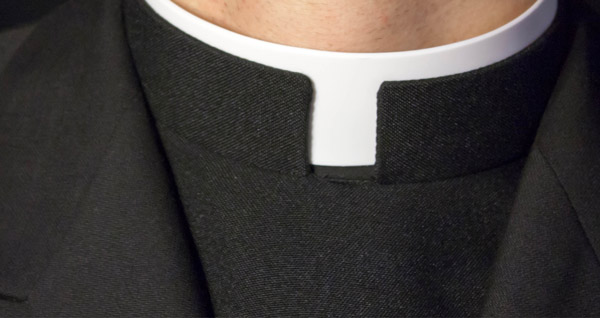
Hurricane Matthew left a path of destruction and heavy flooding along the South Carolina coast and several inland counties when it swept over the state Oct. 7-8.
The storm toppled trees, eroded beaches, destroyed piers and sent storm waters surging across streets and into buildings from Hilton Head Island to Cherry Grove Beach. Streets in downtown Charleston filled with water, boats were tossed like toys at marinas, more than three feet of sand covered the streets of Edisto Beach, and three state parks received damage so severe they will be closed through the end of the year.
At the height of the storm, 350,000 people had evacuated the coast, hundreds filled shelters that opened in schools across the state, and more than 600,000 homes and businesses lost power.
Matthew killed at least 1,000 in Haiti before blasting the Caribbean and United States, where the death toll from the storm stands at 43, including four in South Carolina.

Up to 18 inches of rain caused flooding that in a few cases was nearly as bad or worse than the devastating floods of October 2015.
Severe flooding from the Lumber River inundated the Marion County town of Nichols, where more than 100 people had to be rescued from the top floor of the town hall. Floodwaters from the Little Pee Dee River covered roads and submerged communities elsewhere in Marion County and parts of Horry County. As of Oct. 17, residents of Conway in Horry County were facing record floodwaters on the Waccamaw River, which reached a record-breaking 17.9 feet.
Residents of the Socastee community along the Intracoastal Waterway and other areas had to evacuate as the waterway reached record flood levels of 19.1 feet. Heavy flooding was also reported along the Edisto River in Orangeburg, the Black River in Georgetown County, and in parts of Charleston and Dorchester counties.
As of Oct. 14, 14 South Carolina counties had been designated eligible for federal disaster assistance: Beaufort, Berkeley, Charleston, Colleton, Darlington, Dillon, Dorchester, Florence, Georgetown, Horry, Jasper, Marion, Orangeburg, and Williamsburg. Gov. Nikki Haley has also requested federal funding for another 12 counties.
Clergy and women religious were among the thousands who evacuated. Msgr. Ronald Cellini, dean of the Beaufort deanery and pastor of St. Gregory the Great Church in Bluffton, said all 10 priests and 10 religious sisters who serve in the deanery left, along with many parish staff members from the affected areas.

“We closed everything down on Wednesday,” he said. “Everybody got on board with the evacuation order, which was important because everyone is safe.”
Three feet of floodwater from the Waccamaw River covered the road leading to Holy Trinity School in Longs. Students are attending classes at Our Lady Star of the Sea Church in North Myrtle Beach as of Oct. 17 and will remain there until floodwaters recede, according to Father D. Anthony Droze, church pastor.
Several churches and schools reported wind and water damage, according to Tracy Bates, Catholic Mutual’s claims risk manager for the Diocese of Charleston.
Water damaged floors in the adoration chapel, confessionals and cry room at Blessed Sacrament Church and also seeped onto floors in the faculty lounge and kindergarten classroom at Blessed Sacrament School. Electrical panels in the basement at Sacred Heart Church were flooded and ground level air conditioning units were submerged in water.
Tree limbs landed on the roof of the multipurpose building at St. Francis by the Sea Church on Hilton Head Island and also on the roof at St. Francis by the Sea School. Damage was also reported at St. Philip Benizi in Moncks Corner, Stella Maris on Sullivan’s Island, St. Peter in Beaufort, Holy Cross Cemetery, Holy Spirit on Johns Island, St. Peter in Cheraw and St. Mary Mission in Hampton.
Hurricane Matthew also forced the St. Francis Center on St. Helena Island in Beaufort County to close after it went without power for more than a week, causing meat, cheese and other perishables in its freezers to spoil, said Sister Canice Adams of the Sisters of Sts. Cyril and Methodius, who run the community outreach.
This food is usually given out to needy families twice a week, but Second Helpings, which delivers food from local grocery store, has not been able to replace it because of the power outages. Sister Canice said people who need food are being referred to local churches and other organizations until electricity is restored.

Elsewhere in the diocese, the Felician Center in Kingstree has been giving out food and water to people in need.
In the days after Matthew hit, Felician Sister Susanne Dziedzic said she and the other sisters visited the homes of children in the center’s after- school program to check on their families, and also distributed food and water to local elderly residents, including a 102-year-old woman who had no electricity but refused to leave her home.
“Driving around the area has been like navigating a maze, because there are trees down at practically every road in this part of Williamsburg County,” Sister Susanne said.
Catholic Charities is also on the front lines of storm relief. Kelli Kaminski, regional coordinator for Catholic Charities in the Pee Dee, spent several nights sleeping at the Emergency Operations Center in Horry County, working with other area agencies to coordinate help.
Catholic Charities has partnered with the American Red Cross and the Salvation Army to serve hot meals in Horry and Georgetown counties, and also distributed 600 emergency boxes with a three-day supply of food to homebound senior citizens in Horry County. They are also working with Impact Ministries, a Southern Baptist group, to send volunteers to help more than 300 Horry County families with tree removal and other damage.
Sadly, most of the families the Pee Dee office helped after the October 2015 floods are now being hit again by Matthew’s floodwaters.
“We just finished repairing one family’s home two weeks ago and now they are having to evacuate again because of Matthew,” Kaminski said. “Just about everyone we helped in Horry and Georgetown counties is now going through it again. It’s sad to see.”
Top photo, provided: Waves crash on the Second Avenue pier in Myrtle Beach on Oct. 8 during Hurricane Matthew. In addition to storm damage, South Carolina residents continue to deal with flooding.





